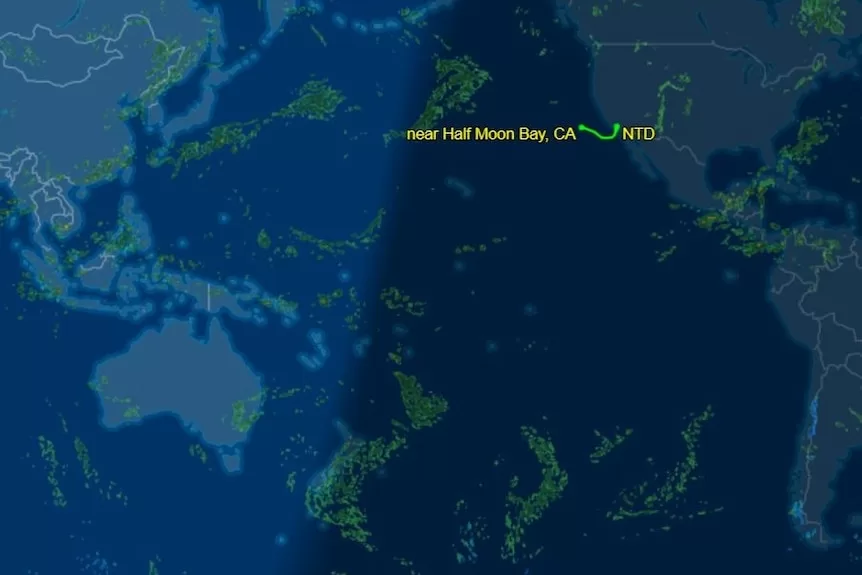The first of at least four new large, unmanned surveillance aircraft ordered from the United States is due to arrive in the Northern Territory early on Saturday where it will soon play a key role in monitoring unauthorised maritime arrivals to the north.
Following months of test flights, the Northrop Grumman MQ-4C Triton — dubbed AUS 1 — flew out of a Californian Naval Air Station on Thursday on a non-stop flight headed to its new home at Royal Australia Air Force (RAAF) Base Tindall.
Roughly the size of a 737 aircraft, the Triton drones will eventually be piloted remotely by the RAAF from the Edinburgh Air Base to assist the Australian Border Force with maritime patrols as well as other military surveillance roles.
Last year Defence Industry Minister Pat Conroy confirmed the purchase of Australia’s fourth MQ-4C Triton as part of a $1.5 billion boost to RAAF capability, despite the US Navy recently halting production of the expensive unmanned platform.
On Friday radar tracking data confirmed “AUS 1” — flying under the call sign “SCORE47” — had departed from the Point Mugu Naval Air Station and was headed across the Pacific on its delivery flight to Australia.
The long-range surveillance drone’s scheduled arrival on Saturday comes as authorities grapple with a number of recent unauthorised boat arrivals that have made it into Australian waters, and even the mainland, undetected.
Critics of the Triton say the aircraft, which operates at an altitude upwards of 50,000 feet, is particularly vulnerable to enemy attack and not capable of monitoring small wooden people-smuggling vessels, a claim hotly disputed by backers of the program.
The aircraft has the ability to survey tens of thousands of square kilometres in a single 28-hour mission, while providing visual and electronic data back in real time, and will be primarily deployed to monitor Australia’s northern maritime approaches.
Australia first expressed interest in acquiring the Triton more than 20 years ago, with the platform based on the RQ-4B Global Hawk flown by the US Air Force, Japan and NATO, but optimised for maritime reconnaissance missions.
Ahead of the arrival of Australia’s first MQ-4C, the head of Air Force Capability, Air Vice-Marshal Wendy Blyth, said RAAF pilots and crews had already been busy training on the platform in the United States.
“These personnel received the same training as their USN counterparts and gained valuable experience to ensure that Air Force is able to deploy the MQ-4C Triton effectively,” she said.
Pentagon’s top AUKUS adviser quits post after two years
The Pentagon’s most senior adviser and coordinator for AUKUS has quit his role overseeing the military partnership between Australia, the United Kingdom and United States.
Abraham Denmark, who has been in the position since July 2022, has not disclosed what his next job will be.
He wrote on social media: “While my departure is bittersweet, I am excited for the future of AUKUS.”
Speaking at a press briefing, Pentagon spokesperson Sabrina Singh said Mr Denmark had played a key role in helping Australia to eventually acquire nuclear-powered submarines.
“He was a key architect of the AUKUS Pillar One optimal pathway announced by the president and the prime ministers, and instrumental in developing advanced capability cooperation in AUKUS Pillar Two,” Mr Singh said.
